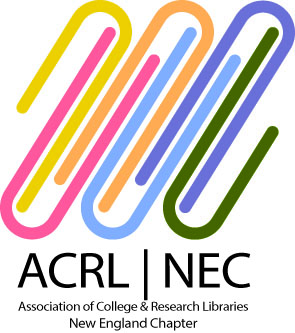Design Thinking for Library Instruction
Type
Presentation
DOI
https://doi.org/10.7275/9ahb-vf60
Session Description
Design focused learning activities can increase student engagement and participation and retention of information literacy skills. Design thinking is focused on empathy, on understanding the needs of the user. This is followed by defining the essential problem and brainstorming solutions that address that problem, which in turn leads to prototyping and testing and modification. By presenting library research as a creative iterative process rather than a series of routines for following set patterns of database searching librarians can tap into students innate curiosity. Even when instruction is limited to a one shot classroom visit the principles can still be internalized by students and can encourage them to learn more on their own.
This session is based on work being done by DIAD, the Design Initiative at Dartmouth, which seeks to bring design thinking practices to all aspects of instruction. Through action-oriented learning, scholarship, and impactful projects, DIAD seeks to create a system for human-centered design creativity accessible to everyone.
This session will present several examples of how design thinking can be applied to instruction in general and the ACRL Framework in particular. Participants engage in activities that will stimulate their innovation lateral thinking. They will take away knowledge in creating design experiences in the library classroom, an understanding of the principles involved, and a plan for bringing these concepts into their own instruction sessions.
Type of Library
College Library
Design Thinking for Library Instruction
Hogan Suite A
Design focused learning activities can increase student engagement and participation and retention of information literacy skills. Design thinking is focused on empathy, on understanding the needs of the user. This is followed by defining the essential problem and brainstorming solutions that address that problem, which in turn leads to prototyping and testing and modification. By presenting library research as a creative iterative process rather than a series of routines for following set patterns of database searching librarians can tap into students innate curiosity. Even when instruction is limited to a one shot classroom visit the principles can still be internalized by students and can encourage them to learn more on their own.
This session is based on work being done by DIAD, the Design Initiative at Dartmouth, which seeks to bring design thinking practices to all aspects of instruction. Through action-oriented learning, scholarship, and impactful projects, DIAD seeks to create a system for human-centered design creativity accessible to everyone.
This session will present several examples of how design thinking can be applied to instruction in general and the ACRL Framework in particular. Participants engage in activities that will stimulate their innovation lateral thinking. They will take away knowledge in creating design experiences in the library classroom, an understanding of the principles involved, and a plan for bringing these concepts into their own instruction sessions.


Comments
https://doi.org/10.7275/9ahb-vf60